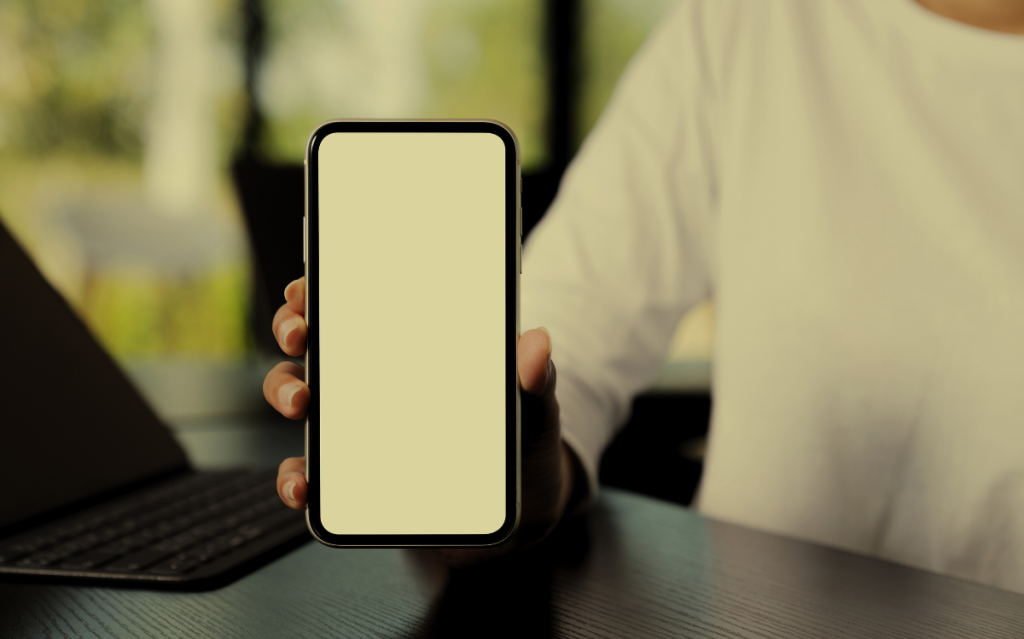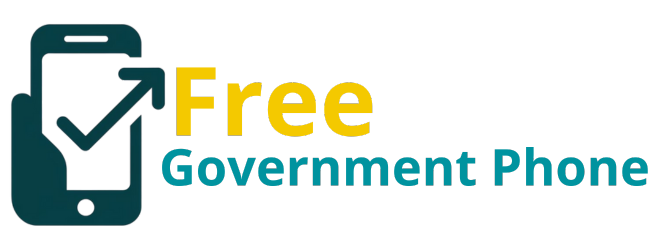If you’re a low-income resident in Los Angeles, the California LifeLine Program offers discounted or free phone services. This program helps eligible individuals stay connected to family, work, and emergency services. Here’s how to get started quickly and easily.
Key Takeaways:
- Eligibility: Income-based or program-based eligibility (e.g., Medi-Cal, SNAP).
- Application Process: Apply through approved providers and submit required documentation.
- Lifeline Benefits: Enjoy discounted or free phone and internet services once approved.
California LifeLine Program Overview
What the Program Offers
The California LifeLine Program aims to provide affordable phone and internet services to low-income residents. For eligible individuals, this could mean free or discounted services that are crucial for staying connected.
This service is funded by the federal Universal Service Fund and is managed by the California Public Utilities Commission (CPUC). For people who rely on phone service for their work, education, or healthcare needs, LifeLine offers a lifeline. [1]
Eligible individuals can access free or deeply discounted cell phone services with features like unlimited talk and text, or even internet services. This kind of program can make a substantial difference in people’s lives, especially in a city like Los Angeles, where being reachable is crucial.
Why It Matters for Los Angeles Residents
In a city like Los Angeles, a smartphone isn’t just for checking social media or keeping in touch with friends. It’s the way many people connect to their work, doctors, and even school. Without a phone, people risk missing vital opportunities and resources.
Many of Los Angeles’ low-income households face the challenge of staying connected due to the high cost of communication services. The California LifeLine Program provides a way out, ensuring people can maintain their connections to emergency services, health care, work, and social support systems without going broke.
Eligibility for a Lifeline Phone in Los Angeles
Income-Based Eligibility
To qualify for a Lifeline phone in Los Angeles, one of the primary requirements is income. The household must meet certain income thresholds, which range from 135% to 150% of the Federal Poverty Guidelines. So, for a family of four, the household income would need to fall between about $36,000 to $40,000 a year.
It’s important to note that this income threshold is not based on individual income. Instead, it takes into account the combined annual income of everyone in the household. So, if you live with a partner, kids, or roommates, their income will be factored in.
Program-Based Eligibility
Alternatively, if you or someone in your household participates in certain public assistance programs, you can qualify for the program. Examples of these programs include Medi-Cal (California’s Medicaid), CalFresh (SNAP), SSI, and Section 8 housing. Many tribal assistance programs, such as those provided by the Bureau of Indian Affairs or Tribal TANF, also qualify.
It’s fairly straightforward, if you’re already receiving assistance from one of these programs, you’re likely eligible for Lifeline, too.
Household Rule
The program only allows one Lifeline benefit per household. So, if you live with a roommate who qualifies, they’ll need to apply for their own Lifeline service. Households with separate finances might qualify for individual benefits, but the important thing to remember is that only one discount is available per economic unit.
Documents Required for Application

Proof of Eligibility
When applying for a Lifeline phone, you’ll need to provide proof that you meet the eligibility requirements. If you qualify through a program-based route, you’ll need to submit documentation showing you’re participating in a qualifying assistance program. This could be a program participation statement, an official notice, or a benefits letter.
If you’re applying based on your income, you’ll need to provide recent documents that prove your household’s total income. This could be a recent tax return, pay stubs, or a Social Security statement. Keep in mind that all documents must be official, current, and should clearly match the name on the application.
Acceptable Documentation
Whether you submit your proof of eligibility electronically, by mail, or in person, it’s critical that you submit the proper documentation. The CPUC is very strict about requiring up-to-date documents. They need to see that the proof is current and corresponds to the right person.
How to Apply for a Lifeline Phone
Step 1 – Choose a Certified Provider
The first step in applying for a Lifeline phone is to choose a certified provider. California has several companies approved by the CPUC to offer Lifeline services. Popular providers in Los Angeles include TruConnect, Assurance Wireless, SafeLink, and enTouch. Each provider offers slightly different services, so it’s wise to explore what each offers before applying.
Step 2 – Submit Your Application
Once you’ve chosen your provider, you’ll submit an application. The application process can be done online, by phone, or even in person at a local retail location. Depending on the provider, you might need to go through the National Verifier [2], a tool used to confirm your identity and eligibility. The process is typically fast and user-friendly, but some providers may require extra documentation, so keep an eye out for any additional steps.
Step 3 – Provide Documentation
After filling out the application, you’ll need to submit proof of your eligibility or income. Be sure that all documents are valid, current, and correspond with your application information. This step can be done by uploading scans, taking photos of documents, or mailing in copies.
Step 4 – Wait for Approval and Receive Device
Once your application is processed, the provider will notify you of your approval. If approved, you’ll receive your phone and services within 5 to 10 business days. During this waiting period, make sure to check your email or phone for any updates from the provider.
Lifeline Phone Providers in Los Angeles
Provider Comparison
When it comes to Lifeline providers in Los Angeles, there are several to choose from. Here’s a breakdown of what some of the top providers offer:
- TruConnect – Provides a free smartphone with unlimited talk, text, and 14GB of data each month.
- Assurance Wireless – Offers a free device with unlimited texting, monthly minutes, and data options.
- SafeLink – Provides an option to bring your own phone and includes hotspot access for data.
- enTouch Wireless – Known for offering prepaid options and the ability to upgrade plans if needed.
Key Features to Consider
When selecting a Lifeline provider, it’s important to consider a few features. Look for providers offering mobile hotspot functionality if you need internet access on the go. Some providers also offer data top-ups or additional services, which might be helpful if you need more than what’s provided in the basic plan. Also, pay attention to return and upgrade policies, in case you need to exchange or improve your device later on.
Managing Your Lifeline Benefits
Recertification Requirements
Once you’re enrolled in the California LifeLine Program, you’ll need to recertify your eligibility annually. The process can be done through your provider or the Universal Service Administrative Company (USAC). If you miss the recertification deadline, your benefits might be suspended, so make sure you stay on top of it.
Maintaining Active Usage
To keep your Lifeline service, you must use your phone at least once every 30 days. If your phone remains inactive for longer than that, the provider could cancel your service. Make sure you’re making calls, sending texts, or using the internet regularly to avoid cancellation.
Changing or Switching Providers
You’re allowed to switch Lifeline providers once every 30 days. If you’re not satisfied with your current provider, you can apply with another one. However, switching providers means you must reapply and recertify your eligibility.
If You’re Denied or Need Support
Common Reasons for Denial
Sometimes, applicants are denied Lifeline service. Common reasons for denial include:
- Duplicate benefits within the same household
- Missing or mismatched documentation
- Not meeting the income or program participation criteria
What to Do Next
If you’re denied, you can appeal the decision through the National Verifier. It’s important to review the denial letter for details on why your application was rejected and correct any mistakes. If you need assistance, contact the CPUC or USAC for help.
Important Contacts
If you run into issues or have questions, here are some contacts to keep handy:
- California LifeLine: 1-877-858-7463
- USAC Lifeline Support: 1-800-234-9473
- CPUC Consumer Affairs: 1-800-649-7570
Options Beyond Lifeline
Affordable Connectivity Program (ACP)
The Affordable Connectivity Program (ACP) is another government initiative that provides broadband discounts for eligible individuals. This can be stacked with your Lifeline benefits, giving you a double discount on phone and internet services.
Lifeline and Link-Up for Tribal Lands
If you’re living on tribal lands, the Lifeline program provides extra support through the Link-Up program. It can help lower the cost of phone services for people living on Indian Reservations.
Pay-As-You-Go and Prepaid Plans
If you no longer qualify for the Lifeline program or need more flexibility, there are still options available. Some providers offer pay-as-you-go or prepaid plans, which allow you to continue using services without the need for a long-term commitment.
FAQ
How does the California LifeLine program help low-income consumers in Los Angeles?
The California LifeLine program offers eligible low-income consumers a monthly discount on phone or internet services. By providing access to wireless service, eligible customers can stay connected without the burden of high costs. The program supports households with qualifying income or participation in public assistance programs like Medi-Cal, CalFresh, or Temporary Assistance.
This helps ensure that no one falls behind, whether it’s for staying in touch with family, accessing healthcare, or attending school remotely. Eligibility also includes documentation of proof of income or proof of participation in a qualifying program, and applicants must meet the household rule.
Can I apply for a Lifeline phone if I live on Indian Reservations?
Yes, individuals living on Indian Reservations can apply for the California LifeLine program under the Lifeline and Link-Up service for tribal lands. This federal program, supported by the Bureau of Indian Affairs and the Food Distribution Program, provides additional support to eligible consumers on reservations. In these areas, the Lifeline program offers discounts on wireless service, including voice and internet service.
However, you’ll need to provide proof of participation in a qualifying program like the Tribally-Administered Temporary Assistance (TANF) and follow the standard application process through the National Verifier.
What happens if I miss the recertification for my Lifeline benefits?
Recertification is required annually for all Lifeline Service participants to maintain their benefits. If you miss the recertification deadline, you could lose your discount or phone service. If this happens, it’s crucial to contact Customer Care immediately to resolve the issue.
Proof of eligibility must be submitted once again through the National Verifier, which verifies your continued eligibility based on income or participation in a qualifying program. You might also need to provide an official document, such as a statement of benefits, to avoid any gaps in service coverage.
Can I use my current mobile phone with the Lifeline program?
Yes, many Lifeline service providers offer a “bring your own phone” option, allowing you to use your existing mobile phone. This is available through several Lifeline-supported services like Simple Mobile and Assurance Wireless.
However, the phone must be compatible with the provider’s network and meet specific service requirements. You will also need to make sure that the phone is unlocked, meaning it can be used on multiple networks. If your phone doesn’t qualify, you may be eligible for a new mobile device at no cost or a discounted rate.
What if I don’t meet the Lifeline program’s income eligibility requirements?
If you don’t meet the income eligibility requirements for the California LifeLine program, you might still qualify through participation in government assistance programs like the Temporary Assistance for Needy Families (TANF) or the Supplemental Security Income (SSI) program.
These programs are considered qualifying programs for Lifeline benefits. If your household participates in one of these programs, you could receive a monthly discount on your phone or internet services. Make sure to submit the appropriate documentation, such as a tax return or a statement of benefits, as proof of eligibility.
Conclusion
Getting a free phone through the California LifeLine program in Los Angeles doesn’t need to be a hassle. By ensuring you meet the eligibility requirements, submitting the necessary documentation, and choosing the right provider, you can stay connected without the high costs.
If you’re a senior on Medicaid, there are even more tailored programs to guide you through the process. To make your sign-up process smoother, consider exploring the resources offered by Free Government Phone. For more details, you can sign up and get started by visiting Free Government Phone’s Online Program.
References
- https://www.cpuc.ca.gov/consumer-support/financial-assistance-savings-and-discounts/lifeline/california-lifeline-eligibility
- https://www.usac.org/lifeline/national-verifier/

